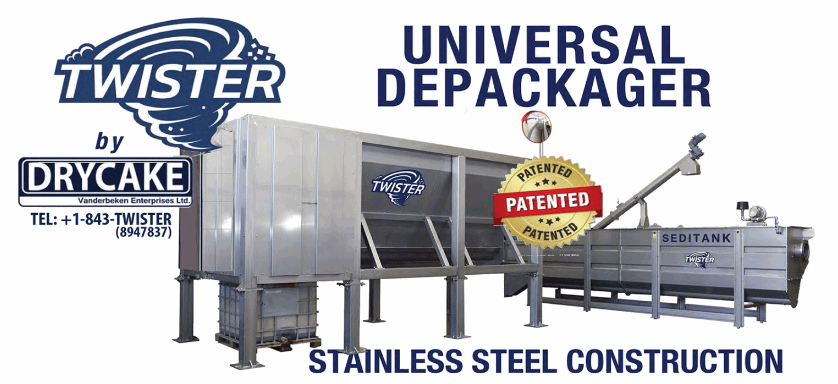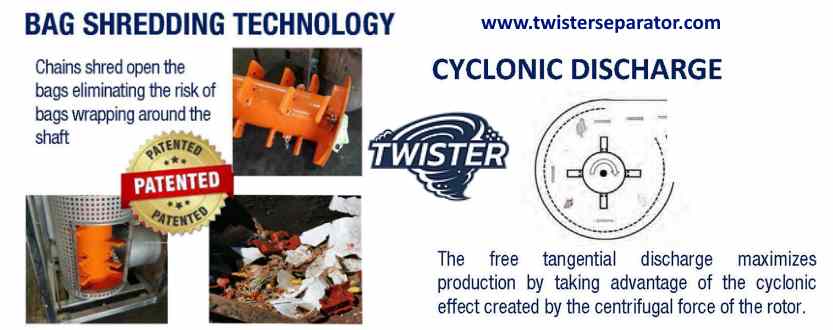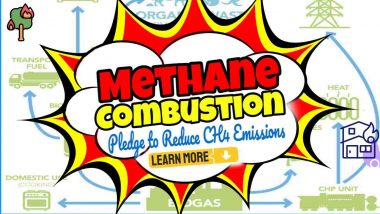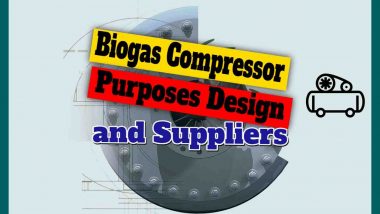Microplastics in Food Waste Recycling and Plastic Shred: Worries About Antiquated Shredding Machines Raise New Light on Plastic Hazards in Food Scrap Recycling
Recent research has highlighted growing concerns regarding the efficiency and safety of older food waste recycling equipment, specifically shredding and depackaging machines still widely used in recycling plants.
Rather than effectively removing plastics from organic waste streams, these older machines often merely break down plastic contaminants into smaller, less visible fragments. This raises significant environmental concerns and threatens the effectiveness of organic waste recycling methods such as composting and anaerobic digestion (biogas production).
Summary of Main Insights
- Greater attention is needed to the effects of microplastics in food waste recycling.
- Older shredding and depackaging equipment in food waste recycling plants often fails to remove plastics, instead fragmenting them into harmful microplastics.
- A paper published in July 2025 shows that microplastics, especially polystyrene, significantly reduce methane (biogas) production in anaerobic digestion processes, with reductions of nearly 48% at higher contamination levels.
- Microplastic contamination negatively affects beneficial microorganisms, disrupting the biochemical processes essential for efficient organic waste recycling.
- Upgrading to newer, more effective recycling technologies is critical to addressing the issue of hidden plastic contamination.
- Increased awareness, regulation, and improved recycling practices are urgently needed to protect the environment and maintain the economic viability of waste recycling.

Key Findings from Recent Research
One of the most recent studies of microplastics in food waste recycling, published in the Journal of Hazardous Materials (July 2025), investigated the impact of polystyrene microplastics (PS MPs) on biogas (methane) production during the anaerobic digestion of food waste under thermophilic (high-temperature) conditions. This study highlights that polystyrene, common in takeaway packaging in many countries, easily breaks down into microplastics, entering the recycling systems and severely impacting biogas production efficiency.

How Microplastics in Food Waste recycling Affect Methane Production:
- Significant Reduction in Methane Yield: At the highest concentration tested (200 mg/L), methane production decreased by nearly 48%.
- Mechanisms of Inhibition: Microplastics cause oxidative stress (reactive oxygen species—ROS) which impairs crucial enzymes required for methane production.
- Microbial Impacts: The presence of microplastics reduces the activity of beneficial microorganisms essential for effective waste breakdown.
Comparative Analysis of Microplastic Impact
| Microplastic Type | Concentration | Effect on Methane Production |
|---|---|---|
| Polystyrene (PS) | 200 mg/L | ↓ 47.8% |
| Polyethylene (PE) | High levels | ↓ 12.4–27.5% |
| PVC | High levels | Significant reduction |
Microplastics in Food Waste Recycling: Data source: Qiao et al. (2025), Wei et al. (2023)
Visual Representation of Methane Yield Reduction
Methane Yield Reduction vs. Microplastic Concentration:
- 100 mg/L: ↓ 15%
- 150 mg/L: ↓ 30%
- 200 mg/L: ↓ 47.8%
This clearly illustrates that as microplastic concentrations increase, biogas generation efficiency significantly decreases.
Why is this a Concern?
- Environmental Impact: Persistent microplastic pollution contaminates soil and water, impacting ecosystems and potentially human health.
- Economic Implications: Reduced biogas yields make anaerobic digestion less economically viable.
- Effectiveness of Recycling: Traditional shredding machines worsen the problem by fragmenting plastics rather than removing them.
Recommendations for Action
- Equipment Upgrade: Recycling facilities should consider upgrading older shredding and depackaging equipment to newer technologies capable of effectively removing plastics.
- Increased Regulation: Stricter standards are needed to limit plastic contamination in food waste processing.
- Public Awareness: Informing industry stakeholders and the public about the hidden risks posed by microplastics can drive improvements in recycling practices.
Microplastics in Food Waste Recycling – Concluding Thoughts
This study joins an increasing body of research from the past three or more years that collectively raises alarm about the unnoticed plastic contamination in organic waste streams.
Addressing these hidden dangers urgently is crucial for sustainable waste management and protecting the integrity of recycling efforts.

Frequently Asked Questions (FAQs)
What are microplastics, and how do they end up in food waste?
Microplastics are tiny plastic fragments smaller than 5 mm in size. They typically originate from broken-down plastic products, such as food packaging and takeaway containers. Older shredding and depackaging machines break these plastics into smaller, less visible fragments rather than removing them effectively, resulting in microplastics contamination.
Why are microplastics harmful to anaerobic digestion (biogas production)?
Microplastics interfere with anaerobic digestion by causing oxidative stress to microorganisms that produce biogas. This significantly reduces their effectiveness, resulting in lower methane yields and overall reduced efficiency of biogas plants.
What types of plastics are commonly found in food waste?
Common plastics in food waste include polystyrene (PS), polyethylene (PE), polypropylene (PP), polyethylene terephthalate (PET), and polyvinyl chloride (PVC). Among these, polystyrene is particularly problematic because it is fragile and breaks down easily during mechanical processing.
What are the visible signs that recycling equipment isn't removing plastics effectively?
A common indication is the presence of small plastic particles or fibers in the finished compost or digestate product. If plastics are regularly visible, even in small sizes, it's likely that the machinery is not effectively separating contaminants from organic waste.
How can recycling facilities address this issue?
Facilities should upgrade to modern depackaging and sorting equipment specifically designed to effectively separate plastics from organic materials, rather than simply breaking plastics into smaller pieces. Additionally, implementing stricter quality control procedures and better operator training can help minimize contamination.
Are there regulations controlling plastic content in recycled organic waste?
Regulations vary by region, but generally, more stringent legislation and standards are needed to effectively control and limit the amount of plastic contamination allowed in organic waste recycling streams.
What can individuals and businesses do to minimize plastic contamination in food waste?
Both individuals and businesses can take steps such as reducing plastic use, carefully separating plastics from food waste, and advocating for stronger recycling policies. Awareness and conscientious disposal can significantly decrease microplastic contamination levels.
Source: Xuejiao Qiao, Xin Kong, Honglin Zhou, Xiaojun Fan, Jin Yuan, Yifeng Zhang. “Deciphering the inhibitory mechanisms of polystyrene microplastics on thermophilic methanogens from the insights of microbial metabolite profiling and metagenomic analyses”, Journal of Hazardous Materials, Volume 492, 2025, 138054. https://www.sciencedirect.com/science/article/abs/pii/S0304389425009690





